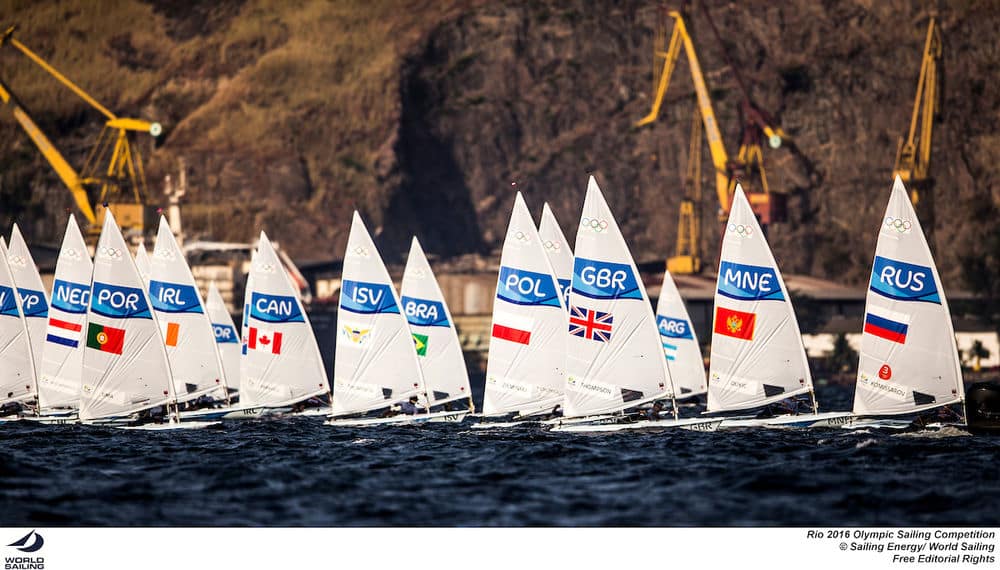
The Rio 2016 Olympic Sailing Competition
Before the start of the Olympic Regatta in Rio, Julio Alsogaray’s name never came up as a class or medal favorite. Yet here he is, going into the third day of racing in the Laser at the top of the fleet with some of the most consistent results thus far.
It’s his strategy that has brought him here and taken him to the top early in the Games. The Argentinian focuses on the starts, making an effort to stay out of the cluster of boats and get off the line as clean as possible. In a fleet of 46, staying clear is a feat.
“To me, this is the most important part of the race,” says Alsogaray through a translator. “I keep the focus on myself and my boat, getting a good start.” The rest of the race will follow with clean air and boat speed, he says.
Rio is Alsogaray’s third Olympics, after a seventh place finish in Beijing and eleventh in London. He said that he is more prepared for this Olympics than ever before. He’s calm, cool and collected and isn’t intimidated by the large fleet size —he plays his own game, which so far has paid off in spades.
As a part of the largest men’s class, if he can maintain his consistency in the top portion of the results he will have a chance to medal. “The scores in this class will be very high [cumulatively] at the end of the week,” he says. “In the end, consistency will be the winner.”
The Lasers will compete in two more races today with a rest day following on Thursday. In today’s bigger breeze, if Alsogaray’s starts are as strong as they’ve been since Monday, he’ll be in a good position for the final days of preliminary racing.
The Nacra 17s and 470s begin racing today. In the Nacra, the regatta is France’s to lose, as Billy Besson and Marie Riou have won all four world championships this quad. They have the target on their backs, but a chronic back injury has slowed their training and could be the chink in their armor. Lisa Darmanin and Jason Waterhouse, from Australia, were right behind the French at the world championship in 2015 and placed third in 2014, and alsowon the test event in 2015, so their track record in Guanabara Bay could give them the edge over the French.
Australia and New Zealand have had a gold-medal run in the men and women’s 470, respectively, since Bejing in 2008. Australia’s Mat Belcher and Will Ryan will sail their first Olympics together, though Belcher is a returning gold medalist from London (with then-partner Malcom Page). They’ll be fending off Croatia’s Sime Fantela and Igor Marenic and Great Britain’s Luke Patience and Chris Grube who all have a solid chance at gold. The first day of racing we can expect to see these three teams perform well on the Escola Naval course. The first two days of racing for the 470s are on two of the most challenging racecourses here in Rio, so any weaknesses will be exposed early on.
For the women, 2015 test event winners Annie Haeger and Briana Provancha will be looking to unseat Australia’s Jo Aleh and Polly Powrie and Great Britian’s Hannah Mills and Saskia Clark, London’s gold and silver medalists respectively. “We’re a bit older and wiser now,” says Clark on her return with Mills. “Our focus will definitely be on staying calm under lots of pressure, and then delivering a performance that we wouldn’t deliver at any other regatta outside of the Olympics. Hannah and I are well-practiced with pressure.” Haeger and Provancha are two of Team USA’s strongest medal candidates, and they’re incredibly well-versed in the conditions in Rio having spent more time here than any other team, they say. The first day of racing is a chance for them to solidify their position among class veterans.








